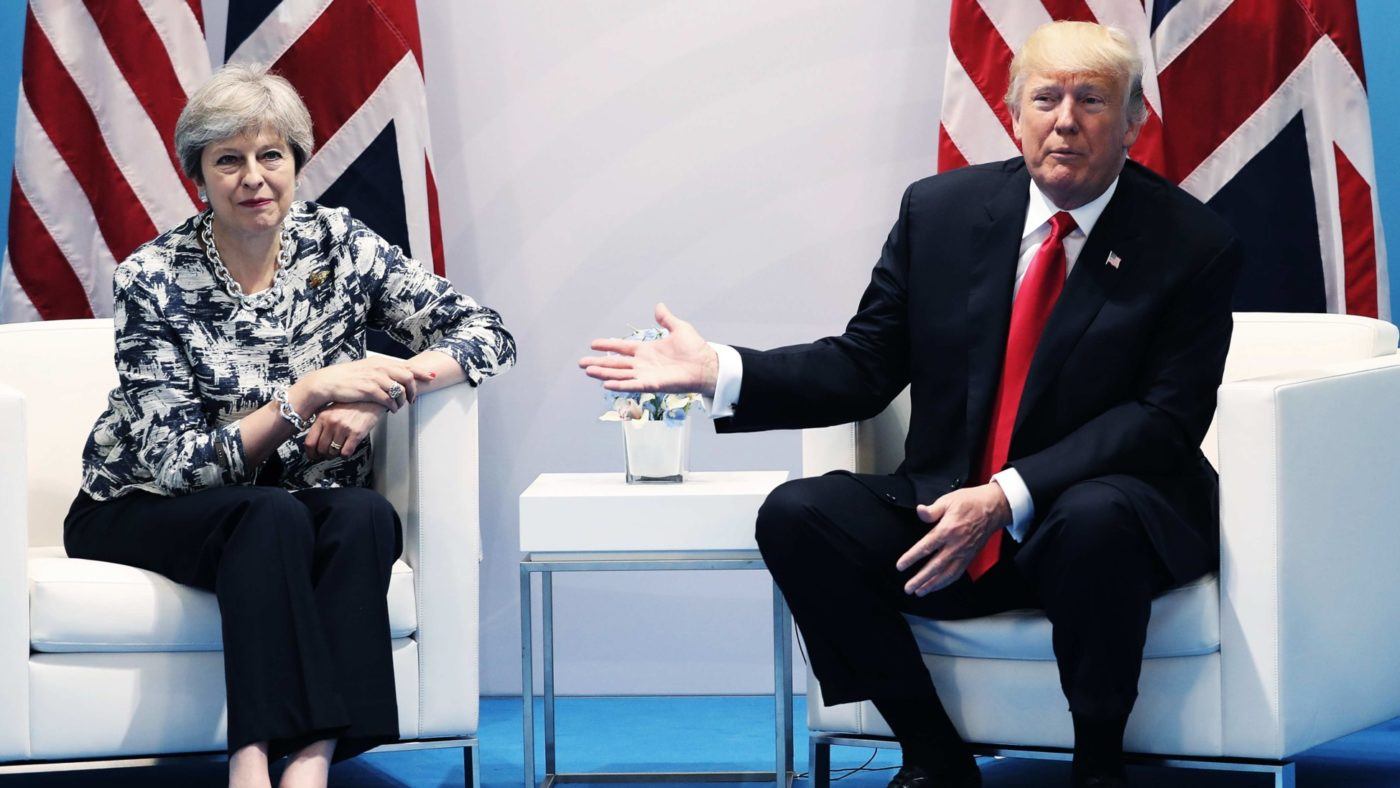We’ve heard endless comparisons between Theresa May and the Iron Lady, and lazy parallels are drawn between President Donald Trump and Richard Nixon. But what about Trump and May themselves?
You wouldn’t expect the leaders on either side of the Atlantic to have much in common. He a property mogul from Queens who is completely new to politics. She a vicar’s daughter from the countryside who’s been on the green benches for two decades. Chalk and cheese.
Well, not quite. For one thing, May and Trump have both enjoyed a torrid 2017 so far. Awkward diplomatic blunders, backroom staff squabbles, judiciaries not playing ball, and important votes not going their way. Plans to get on the front foot have been scuppered at every turn.
However, they share something far more important than that: their premierships are each plagued by the dominance of one exceptionally challenging political issue.
For Trump, of course, it’s healthcare. Among all his domestic plans, reforming America’s health system is by far the most difficult and significant. Meanwhile, Theresa May is presiding – at least for the time being – over Britain’s most important and complex political challenge in the post-war period: leaving the European Union.
For each leader this is the one sole issue on which their success or failure will be judged.
When she became Prime Minister last summer, May announced her ambitions to tackle social injustices and build a “better Britain”. Unfortunately for her, that intention has been completely superseded by the monumental task of getting a successful divorce from the EU. Nothing else in Westminster particularly matters and the civil service is being engulfed by it.
Meanwhile, in America healthcare is the key political issue: a recent poll by Bloomberg showed that 35 per cent felt it was the most significant issue facing the country, dwarfing all other problems. If several million people lose their health insurance, a new wall along the Mexico border will hardly make them feel better about it.
Obamacare and Britain’s relationship with the EU have always been contentious issues: in April 2016, barely more than a third of Americans approved of Obamacare, and Britain has been split on Europe for most of its history. In each case, a consensus has developed that change is needed, but huge divisions have developed over what that change should be.
Both leaders attempted to make these cumbersome, complicated issues sound very simple and solvable. But in doing so, they have set themselves up for a fall.
Throughout the primaries and his presidential campaign, Trump made a huge amount of promises about healthcare that he could not possibly hope to keep. In an interview with CBS, he even advocated universal healthcare – “everybody’s got to be covered” – which he repeated in January. The “repeal and replace” of Obamacare would happen immediately, with an all-singing-all-dancing replacement which everybody would be happy with.
May’s cabinet has built expectations of immigration controls, free trade deals around the world, unfettered single market access and a clean break from the EU. That’s an awfully large shopping list. With her infamous “Brexit means Brexit” and “red, white and blue Brexit” comments, she has tried to shut down discussion of the issue, asking people to simply let her “get on with the job”.
Following May’s disastrous election results, and Trump’s failure to get a healthcare bill through Congress, the nature of the challenge ahead is becoming clearer for Number 10 and the Oval Office.
“Trumpcare” in its current form cannot get enough support in Congress, and is coming in for criticism from either side of the broad Republican church, notably the libertarian Senator Rand Paul and moderate Senator Susan Collins. Similarly, in the UK both major parties are hopelessly split, and the cabinet members have to negotiate delicately both at home and in Brussels.
With Trump committed to replacing Obamacare, and May to leaving the EU and single market, their choices are restricted.
As I have always said, let ObamaCare fail and then come together and do a great healthcare plan. Stay tuned!
— Donald J. Trump (@realDonaldTrump) July 18, 2017
Recently, in frustration at his failures with Congress, Trump has discussed repealing Obamacare without having a replacement, or even letting it fail. This played OK in opposition, in 2015, when Senators voted to repeal, but at the time they knew President Obama would veto it.
Now in power, choosing to repeal Obamacare or letting it fail without a replacement plan in place would be one of the most reckless political decisions in modern history. The system has deep-running problems, but millions of people’s lives depend on it.
Similarly, a transition period for Brexit of whatever length will be deeply unpopular – especially with an expected continuation of freedom of movement and EU budget contributions – but dropping out of the EU with no deal could have catastrophic economic effects.
Obviously there are differences between each situation. The Republican leadership are negotiating with members of the legislature as opposed to leaders of 27 other nations, for example, and Trump is likely to outlast May, given the near-fatal wound she was dealt in June.
But the fundamental choice each leader faces is in many ways the same: taking the path of a unpopular compromise, or presiding over a decision which could cause a great deal of damage to the lives and livelihoods of their citizens.
The only way to make a success of these supremely difficult challenges is by working towards a genuine consensus and pursuing sensible alternatives to what has been before. That means being open to different viewpoints, and willing to give ground: something both Trump and May struggle with.
Trump may want to “Make America Great Again”, and May might have visions of achieving more social justice in Britain, but ultimately how they deal with the big challenge laid before them will determine their legacy.
Judging from their early efforts, that challenge will be their undoing.


